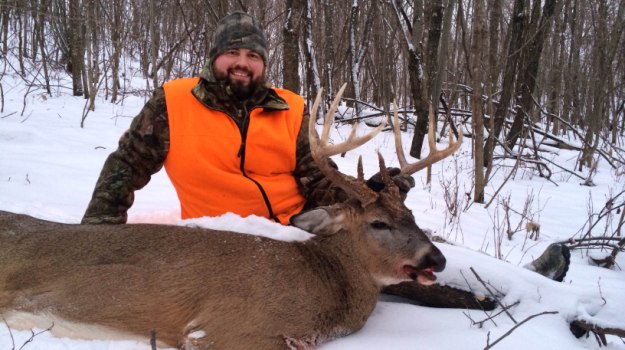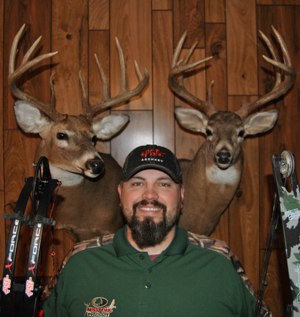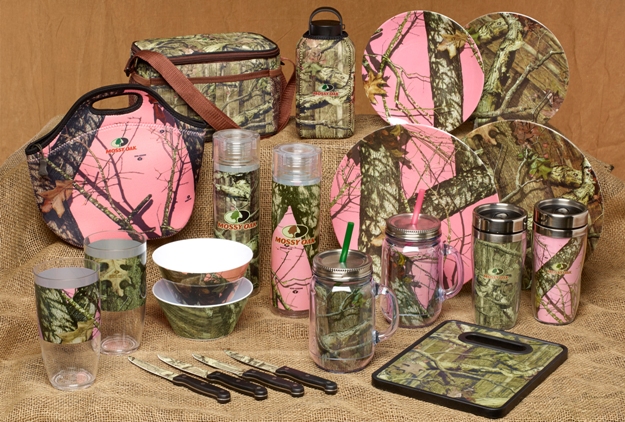
Editor’s Note: Curtis Goettsch, who lives in Cresco, Iowa, first wore military camo given to him by a friend. “I wore that army camouflage until I could save enough money to buy real camouflage,” Goettsch says. Then he purchased a Mossy Oak suit, and he's never changed his choice of camo. He joined the Mossy Oak Pro Staff in 2010 and is a nationally-recognized turkey caller and avid deer hunter. “I feel extremely fortunate to have been selected to be a Mossy Oak Pro Staffer,” Goettsch explains.
Late season in Iowa usually occurs after shotgun season - from Christmas until January 10. This time usually includes late muzzleloader season, but for me it’s bowhunting only. At that time of the year, the rut is usually over, the weather is extremely cold, and most often our area has snow. The bucks have about depleted their fat content from chasing does so much during the rut. Now they're in survival mode and need high-energy food. This time of year is when the bucks will be going to big corn and soybean fields that have been harvested. If our region doesn’t have a lot of snow, I'll focus my hunting on soybean fields, because soybeans contain more energy for the deer than corn does. But if there’s a foot or more of snow on the ground, the soybean fields won’t be nearly as productive for deer as the corn fields.
 Usually, the first week of shotgun season occurs the first week of December and runs for about 3 weeks. Shotgun season puts a tremendous amount of stress on the deer, especially the bucks that just have come through the rut. The largest number of deer hunters in the State of Iowa and from out of state will hunt Iowa during shotgun season. So, they’ll constantly be spooking deer, shooting at deer and taking deer. After shotgun season ends, very-few hunters will be in the woods hunting deer at the end of the season. Because the deer have less hunting pressure at this time and a greater need for high-energy food, they’re more relaxed and are seen more during daylight hours on the corn and soybean fields. I’ve been more successful taking mature bucks at this time of the year than I have in the early season. Many of my hunting buddies will hold off hunting deer until the late season, because they know the bucks are easier to find and see during daylight hours when the deer go to the corn and soybean fields for their high-energy food. On many of these fields, the deer will be feeding on waste grain and beans left on the ground after the harvest. However, if you can work out a deal with a farmer to not harvest a portion of his field that’s planted in corn or beans, you’ll attract more deer in the late season than if you have to depend on hunting just waste grain.
Usually, the first week of shotgun season occurs the first week of December and runs for about 3 weeks. Shotgun season puts a tremendous amount of stress on the deer, especially the bucks that just have come through the rut. The largest number of deer hunters in the State of Iowa and from out of state will hunt Iowa during shotgun season. So, they’ll constantly be spooking deer, shooting at deer and taking deer. After shotgun season ends, very-few hunters will be in the woods hunting deer at the end of the season. Because the deer have less hunting pressure at this time and a greater need for high-energy food, they’re more relaxed and are seen more during daylight hours on the corn and soybean fields. I’ve been more successful taking mature bucks at this time of the year than I have in the early season. Many of my hunting buddies will hold off hunting deer until the late season, because they know the bucks are easier to find and see during daylight hours when the deer go to the corn and soybean fields for their high-energy food. On many of these fields, the deer will be feeding on waste grain and beans left on the ground after the harvest. However, if you can work out a deal with a farmer to not harvest a portion of his field that’s planted in corn or beans, you’ll attract more deer in the late season than if you have to depend on hunting just waste grain.
A new way that landowners are providing late winter crops for deer is to fence off a portion of their crop using a solar panel and then an electric fence to keep the deer out of the crop until the late season. During the late season, they’ll turn the power off to the electric fence, take it down and make that grain available to the deer. Depending on how big the field you're hunting is the beans and corn may have been eaten out of the field before the late season. If you're hunting a small crop field, and you want to ensure good hunting during the late season, this strategy of fencing off a portion of the crop and taking the fence down in the late season has worked well for attracting deer, especially when there's deep snow on the ground.
Another technique that’s only come to the market in the last few years is using Mossy Oak’s DEER-RADISH and Winter Bulbs and Sugar Beets (www.plantbiologic.com). These crops seem to be very effective for providing food for deer during the late season.
In 2013 at the end of shotgun season, I took my biggest buck ever. I didn’t even fire my shotgun during the season - not even to take a doe. I had passed on some young bucks and had seen quite a few does, but I just didn’t see a deer I wanted to take. On the last day of shotgun season - the last hour of legal hunting time - a buck I had identified from my trail cameras and named the Perfect 10 stepped out. This buck that had a 152-6/8-inch rack was running with a spike buck and another buck that would score 140 inches. I shot the big buck. The foot of snow on the ground made blood trailing that buck easy, and he only went about 150 yards before we found him.
Day 4: Curtis Goettsch on Hunting the Rut on Small Woodlots Adjacent to Agricultural Fields




























